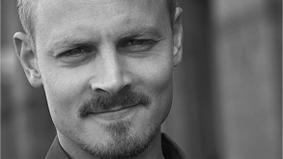Frank Zappa
The DIKW model is a hierarchy used in the fields of information science and knowledge management. In the model, data is characterised as discrete, objective facts, observations, readings, stimuli that have no meaning or value because they are unprocessed and unorganised and so lack context and interpretation. Information has some degree of meaning, structure and purpose applied to that data or stimuli (like descriptions) so is more useful, applicable and relevant. Knowledge is more useful still, and is typically defined as information that has been processed, organised or applied in some way – a framework derived from a fluid mix of values, beliefs, rules, skills, expertise, experience, insight, intuition, contextual information.
Combinations of information combined over time to convey understanding, accumulated learning, applied in our minds or embedded in organisational practices and norms. Wisdom can be described as a more useful form of knowledge or evaluated understanding, that adds value, that requires judgement – ‘why do’ as opposed to ‘why is’. The model is similar to Maslow’s hierarchy of needs in that each level is a precursor to the level above, and so describes functional relationships in that lower levels comprise the material of higher levels. So information is defined in terms of data, knowledge in terms of information, and wisdom in terms of knowledge.
The data deluge is very real, and it’s not going away. One estimate suggests that in 2005 mankind created 150 exabytes (that’s a billion gigabytes). This year, that figure will be more like 1,200 exabytes. Most organisations sit on huge repositories of data that are often under-utilised and not linked up. The internet of things is already generating vast quantities of data from objects. Data that exists not just in systems but systems of systems. Systems that talk to each other, influence and affect one another in ways that can create helpful services (the IBM video below, a useful summary of the internet of things, describes this matrix).
So it is useful to think about the structure of interpretation and understanding that we apply to the data we gather. And it’s interesting to think about how that can be applied so that we might create not just useful services, but interesting stories. Stories are important since they convey value and meaning, even onto inanimate objects. Value that can be intangible, but equally very real.
The Significant Objects project saw creative writers inventing stories about random objects that had been bought in thrift shops. The objects were then put on e-bay along with their stories (it was made clear they were fictional) to see if the stories could invest in them a new significance and value. It was not a perfect experiment, but the results were amazing. $128 worth of thrift-store junk was sold for $3,612 (which went back to the contributing writers).
When Russell first talked about his post-digital schtick he talked about how, as objects informationalise, communication channels are getting built in. About how the stuff and the possibilities that digital technologies facilitate – the creativity, conversation, community and collaboration – were migrating into the real world, turning out real objects, real events, real places. All of that real stuff was there before of-course, but we’re starting to get to a really interesting point where embedded technologies, and the data that they create, are starting to be applied in some intriguing ways, generating some really interesting ideas.
Like The History Tag, an idea by David Hieatt. As I do, David believes that one of the best things we can do for the environment is to make products last longer. On a personal level I find the fallibility and impermanence that seems to be baked-in to products now an immensely frustrating cultural norm. We seem to have gotten ourselves into a situation where we accept ever shortening consumption cycles that see products designed with an in-built capacity to wear out, break, or become out-of-date after a given (usually short) amount of time. So David’s idea is to encourage the practice of owning things that do last and that can be handed down by using digital technologies to enable objects to tell their own stories. So the History tag is like a barcode, but one that is updatable via the web or an app:
"…imagine a well-made bag with a ‘History Tag’. This will allow the owner to update its history on a bit of The History Tag website. What they have been up to with their bag: its best day, its worst, its journeys, its fun times etc. And, if that bag is ever sold on one day, or passed down, then, that history will go with it. The new owner can get their phone to read the tag and its history, so they will know its story."
The internet is changing the default from forgetting to remembering. As the line between physical and virtual blurs, perhaps we are only scratching the surface of what is possible. We’re used to objects telling their stories through their visual appearance. A frayed hem on a jacket, a coffee stain on a magazine page, the page of a book turned over at the corner where someone once paused, mid-story, perhaps to sleep or just to think about what they’d just read. Yet objects are increasingly equipped to tell their own stories in multiple ways. It’s intriguing to imagine where that might go.
Original Post: http://neilperkin.typepad.com/only_dead_fish/2010/04/objects-and-stories.html




